-
 Bitcoin
Bitcoin $106,722.7227
-0.34% -
 Ethereum
Ethereum $2,418.3544
0.14% -
 Tether USDt
Tether USDt $1.0003
0.02% -
 XRP
XRP $2.1184
-2.95% -
 BNB
BNB $643.5763
-0.05% -
 Solana
Solana $142.5578
-1.03% -
 USDC
USDC $0.9997
-0.02% -
 TRON
TRON $0.2712
0.04% -
 Dogecoin
Dogecoin $0.1597
-2.44% -
 Cardano
Cardano $0.5543
-2.66% -
 Hyperliquid
Hyperliquid $37.0573
-0.79% -
 Bitcoin Cash
Bitcoin Cash $491.8819
2.16% -
 Sui
Sui $2.6348
-4.78% -
 Chainlink
Chainlink $13.0863
0.02% -
 UNUS SED LEO
UNUS SED LEO $9.0041
0.08% -
 Stellar
Stellar $0.2352
-2.73% -
 Avalanche
Avalanche $17.2314
-2.32% -
 Toncoin
Toncoin $2.8089
-1.45% -
 Shiba Inu
Shiba Inu $0.0...01124
-2.47% -
 Litecoin
Litecoin $84.5273
0.15% -
 Hedera
Hedera $0.1446
-4.17% -
 Monero
Monero $313.6797
0.09% -
 Dai
Dai $0.9998
-0.01% -
 Ethena USDe
Ethena USDe $0.9999
-0.03% -
 Polkadot
Polkadot $3.3013
-1.98% -
 Bitget Token
Bitget Token $4.4786
2.50% -
 Uniswap
Uniswap $6.8362
-1.43% -
 Pi
Pi $0.5605
-12.40% -
 Pepe
Pepe $0.0...09242
-4.79% -
 Aave
Aave $252.8934
-2.23%
If the low position continues to increase in volume but the moving average is still short, should we wait and see?
A surge in volume at lower price levels may signal potential reversal patterns, but confirmation through candlestick formations and moving averages is crucial before making trading decisions.
Jun 26, 2025 at 08:07 pm
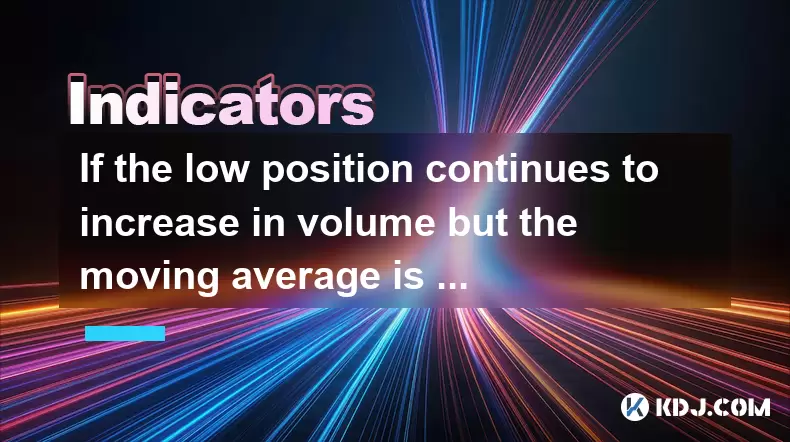
Understanding the Scenario: Low Position with Increasing Volume
In the cryptocurrency market, traders often encounter situations where a particular asset is trading at a relatively low price level (referred to as a "low position"), yet there is a noticeable increase in trading volume. This phenomenon can be confusing because it suggests that more market participants are engaging with the asset, but the price remains subdued or even continues to decline slightly.
When analyzing such a situation, it's important to consider what increasing volume typically signifies. In technical analysis, rising volume during a downtrend can indicate either strong selling pressure or aggressive buying activity. The key lies in how the price reacts alongside this volume surge. If the price doesn't drop significantly despite high volume, it could mean that buyers are absorbing the sell pressure and potentially preparing for a reversal.
Important: Always evaluate volume in context with other indicators and chart patterns before making any decision.
Moving Average Short-Term Signals: What Does It Mean?
A short-term moving average—such as the 10-period or 20-period moving average—is currently below the current price action. This means that the recent price movement has not yet pulled the moving average upward. A moving average that remains short implies that the short-term trend is still bearish, even if the volume is increasing.
Moving averages are lagging indicators, so they respond slowly to price changes. When the price is above a short-term moving average, it may suggest that bulls are trying to take control, but until the moving average begins to rise, the trend cannot be confirmed as bullish.
Critical Insight: A short moving average indicates that the momentum hasn’t shifted decisively in favor of buyers yet.
Why Wait-and-See Might Be a Valid Strategy
Given the scenario described, one logical approach is to adopt a wait-and-see strategy. This involves closely monitoring the behavior of both price and volume without taking any immediate position. Traders who follow this method aim to avoid entering too early and risking false signals.
There are several reasons why waiting might be appropriate:
- Avoiding premature entry: Entering a trade before the trend confirms can lead to losses if the price doesn’t move as expected.
- Confirming breakout potential: Waiting for a clear break above resistance levels or a shift in the moving average can offer better risk-reward ratios.
- Observing candlestick formations: Bullish candlestick patterns emerging after a period of consolidation can provide stronger signals than volume alone.
Key Consideration: Patience allows traders to filter out noise and focus on actionable setups rather than speculative ones.
Steps to Monitor the Market Behavior
If you decide to wait, here are some practical steps to monitor the evolving market dynamics:
- Track volume spikes: Use tools like volume histograms or on-balance volume (OBV) to identify unusual buying or selling interest.
- Observe support levels: Watch whether the price holds above critical support zones while volume increases.
- Watch for moving average crossovers: Pay attention to when shorter-term moving averages cross above longer-term ones, which can signal a change in trend.
- Check for accumulation signs: Look for steady volume increases without significant price drops, which may indicate smart money buying.
- Use multiple timeframes: Analyze daily, 4-hour, and 1-hour charts to get a clearer picture of the broader trend and possible reversals.
Essential Action: Combine these observations into a cohesive narrative before deciding to act.
Recognizing Potential Reversal Patterns
Volume surges at lower price levels often precede potential reversals. Recognizing early signs of a bottom formation can help traders prepare for a possible trend change. Common reversal patterns include:
- Bullish engulfing pattern: A large bullish candle that completely engulfs the previous bearish candle.
- Hammer or inverted hammer: Candlesticks with long wicks indicating rejection of lower prices.
- Morning star: A three-candle pattern signaling a potential bullish reversal.
- Double bottom or triple bottom: Price attempts to fall below a prior low but fails, suggesting demand is building.
Each of these patterns becomes more reliable when accompanied by increased volume and a shift in moving averages.
Crucial Note: Patterns gain strength when supported by volume and align with broader market sentiment.
Frequently Asked Questions
Q: How do I differentiate between buying pressure and distribution when volume increases at a low position?
A: Buying pressure typically shows signs of price stabilization or higher lows, whereas distribution often sees continued weakness or sharp rallies followed by renewed selling. Monitoring candlestick closes and volume profiles helps distinguish the two.
Q: Should I use limit orders or market orders when entering a trade after confirming the trend?
A: Limit orders allow you to set a specific entry price, which is useful if you're waiting for confirmation near a support level. Market orders execute immediately at the best available price but may result in slippage during volatile conditions.
Q: Can moving averages be adjusted to react faster to price changes?
A: Yes, using exponential moving averages (EMA) instead of simple moving averages (SMA) gives more weight to recent prices, making them more responsive. However, faster-moving EMAs can also produce more false signals.
Q: Is it safe to assume a reversal just because volume is rising?
A: No, volume alone isn’t sufficient to confirm a reversal. It should always be used in conjunction with price action, candlestick patterns, and possibly other indicators like RSI or MACD to validate potential shifts in momentum.
Disclaimer:info@kdj.com
The information provided is not trading advice. kdj.com does not assume any responsibility for any investments made based on the information provided in this article. Cryptocurrencies are highly volatile and it is highly recommended that you invest with caution after thorough research!
If you believe that the content used on this website infringes your copyright, please contact us immediately (info@kdj.com) and we will delete it promptly.
- Ethereum Whale Moves, Pi Network's Progress, and the Altcoin Surge: What's the Buzz?
- 2025-06-26 22:50:11
- Real World Assets (RWA): Riding the Blockchain Revolution Wave
- 2025-06-26 23:30:12
- Kaspa's Crypto Surge: Riding Market Strength to New Heights
- 2025-06-26 23:10:12
- ONDO Price Primed for Takeoff: Support Bounce Signals Bullish Surge
- 2025-06-26 22:27:13
- Sui Price Prediction: Will the SUI Drop Lead to a Rebound?
- 2025-06-26 23:50:12
- Pi Network: Decoding the Price Growth and Real Demand
- 2025-06-26 23:10:12
Related knowledge
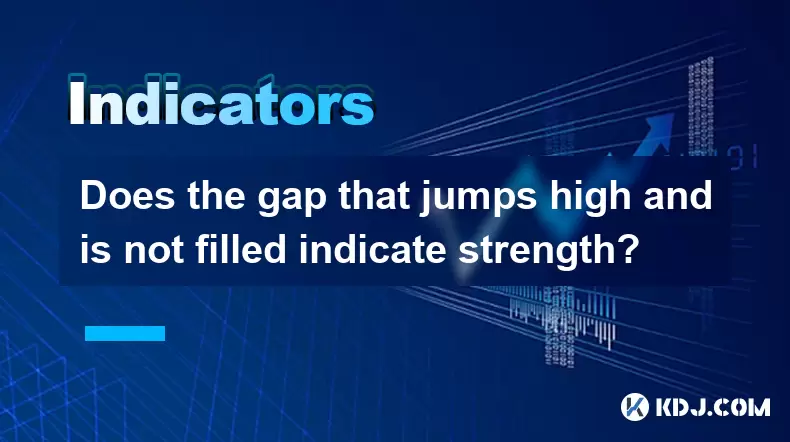
Does the gap that jumps high and is not filled indicate strength?
Jun 26,2025 at 11:36pm
Understanding the Concept of Gaps in Cryptocurrency ChartsIn the world of cryptocurrency trading, gaps refer to areas on a price chart where the price of an asset jumps significantly up or down, leaving no trading activity between two specific points. These gaps typically occur due to after-hours news, market sentiment shifts, or sudden influxes of buy/...
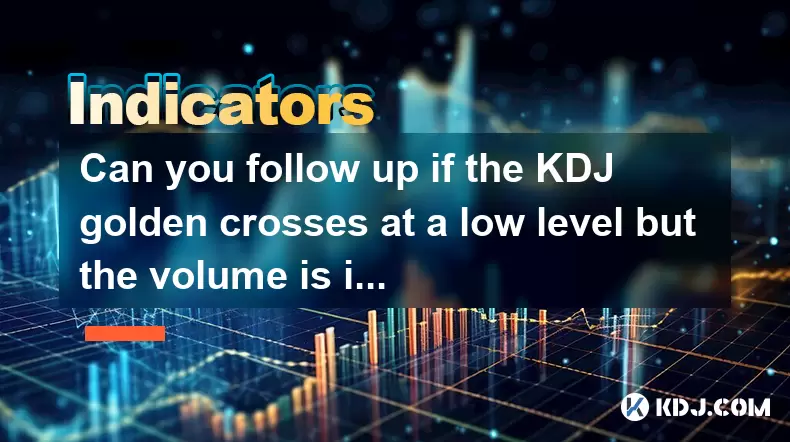
Can you follow up if the KDJ golden crosses at a low level but the volume is insufficient?
Jun 27,2025 at 12:01am
Understanding the KDJ Indicator in Cryptocurrency TradingThe KDJ indicator, also known as the stochastic oscillator, is a popular technical analysis tool used by cryptocurrency traders to identify potential buy and sell signals. It consists of three lines: the %K line, the %D line (which is a moving average of %K), and the %J line (a projection of the t...
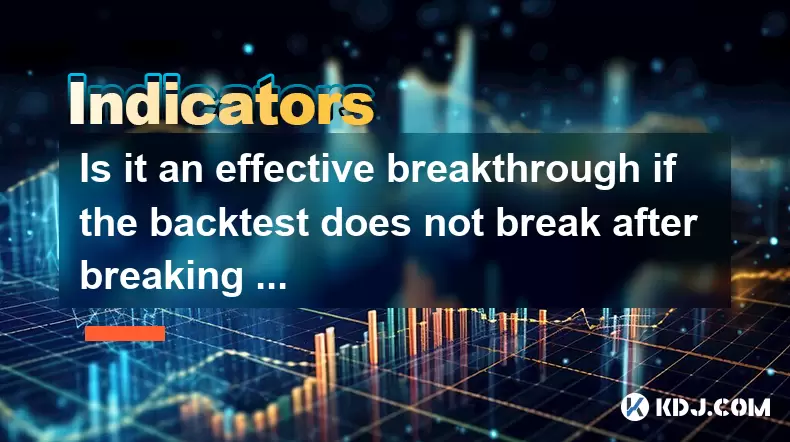
Is it an effective breakthrough if the backtest does not break after breaking through the neckline?
Jun 26,2025 at 10:08pm
Understanding the Role of Blockchain in Secure TransactionsBlockchain technology is at the heart of secure cryptocurrency transactions. Each block contains a list of transactions, and once recorded, altering past blocks becomes nearly impossible without network consensus. This immutability ensures that once a transaction is confirmed, it cannot be rever...
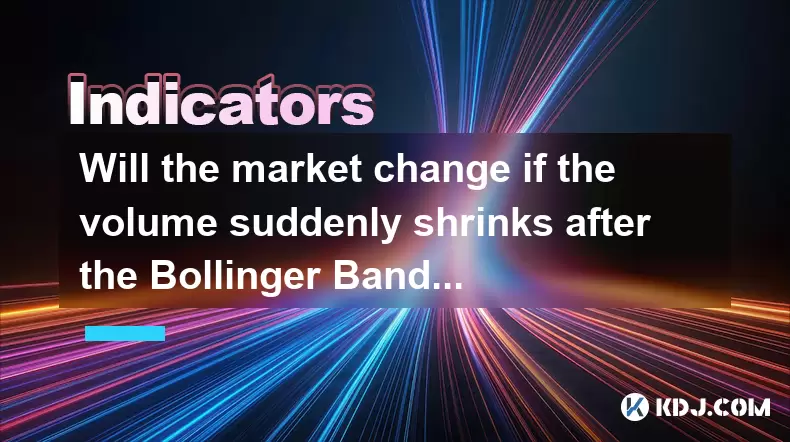
Will the market change if the volume suddenly shrinks after the Bollinger Bands open?
Jun 26,2025 at 09:56pm
Understanding the Bollinger Bands MechanismBollinger Bands are a widely used technical analysis tool that consists of a moving average and two standard deviation lines plotted above and below it. These bands dynamically adjust to price volatility, expanding during periods of high market activity and contracting when volatility decreases. Traders use thi...
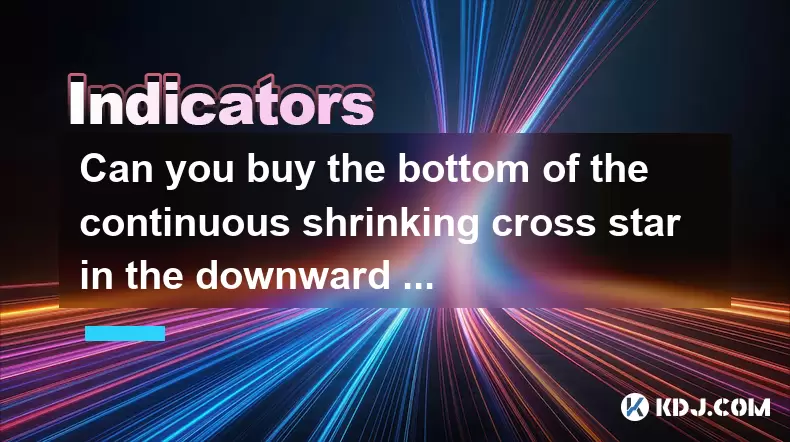
Can you buy the bottom of the continuous shrinking cross star in the downward trend?
Jun 26,2025 at 10:28pm
Understanding the Continuous Shrinking Cross Star PatternThe continuous shrinking cross star is a candlestick pattern that typically appears during a downtrend. It consists of multiple small-bodied candles with upper and lower shadows, indicating market indecision. Each subsequent candle in this pattern has a smaller body than the previous one, showing ...

Is there a main force bottom-fishing with a long lower shadow at a low position?
Jun 26,2025 at 10:56pm
Understanding the Candlestick Pattern: Long Lower Shadow at a Low PositionA long lower shadow candlestick pattern is often seen as a potential reversal signal in technical analysis. When this pattern appears at a low position, it suggests that sellers pushed prices down during the session, but buyers eventually stepped in and pulled the price back up ne...

Does the gap that jumps high and is not filled indicate strength?
Jun 26,2025 at 11:36pm
Understanding the Concept of Gaps in Cryptocurrency ChartsIn the world of cryptocurrency trading, gaps refer to areas on a price chart where the price of an asset jumps significantly up or down, leaving no trading activity between two specific points. These gaps typically occur due to after-hours news, market sentiment shifts, or sudden influxes of buy/...

Can you follow up if the KDJ golden crosses at a low level but the volume is insufficient?
Jun 27,2025 at 12:01am
Understanding the KDJ Indicator in Cryptocurrency TradingThe KDJ indicator, also known as the stochastic oscillator, is a popular technical analysis tool used by cryptocurrency traders to identify potential buy and sell signals. It consists of three lines: the %K line, the %D line (which is a moving average of %K), and the %J line (a projection of the t...

Is it an effective breakthrough if the backtest does not break after breaking through the neckline?
Jun 26,2025 at 10:08pm
Understanding the Role of Blockchain in Secure TransactionsBlockchain technology is at the heart of secure cryptocurrency transactions. Each block contains a list of transactions, and once recorded, altering past blocks becomes nearly impossible without network consensus. This immutability ensures that once a transaction is confirmed, it cannot be rever...

Will the market change if the volume suddenly shrinks after the Bollinger Bands open?
Jun 26,2025 at 09:56pm
Understanding the Bollinger Bands MechanismBollinger Bands are a widely used technical analysis tool that consists of a moving average and two standard deviation lines plotted above and below it. These bands dynamically adjust to price volatility, expanding during periods of high market activity and contracting when volatility decreases. Traders use thi...

Can you buy the bottom of the continuous shrinking cross star in the downward trend?
Jun 26,2025 at 10:28pm
Understanding the Continuous Shrinking Cross Star PatternThe continuous shrinking cross star is a candlestick pattern that typically appears during a downtrend. It consists of multiple small-bodied candles with upper and lower shadows, indicating market indecision. Each subsequent candle in this pattern has a smaller body than the previous one, showing ...

Is there a main force bottom-fishing with a long lower shadow at a low position?
Jun 26,2025 at 10:56pm
Understanding the Candlestick Pattern: Long Lower Shadow at a Low PositionA long lower shadow candlestick pattern is often seen as a potential reversal signal in technical analysis. When this pattern appears at a low position, it suggests that sellers pushed prices down during the session, but buyers eventually stepped in and pulled the price back up ne...
See all articles
























































































